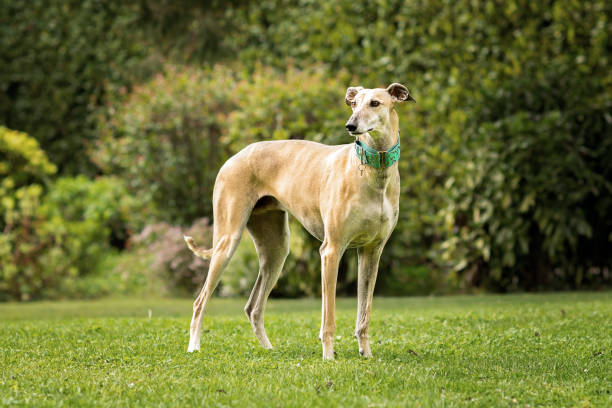English Greyhound

Breed History:
The Greyhound, a sleek and swift breed, is the fastest dog in the world, capable of reaching speeds over 65 km/h. Thought to have descended from the Arabian Sloughi, they were brought to England by traders before 900 AD. Originally used for hunting deer and wild boar, they could chase down prey with unmatched speed and endurance. Over time, Greyhounds became central to dog racing, particularly in Anglo-Saxon countries, where they were used to chase mechanical rabbits. Sadly, many retired racers face uncertain futures, although rescue groups work to find them new homes. Known for their agility, keen sight, and gentle temperament, Greyhounds are cherished as both skilled athletes and devoted companions.
|
Gender |
Height |
Weight |
|
Male |
71-76 cm |
29-32 kg |
|
Female |
68-71 cm |
27-29 kg |
Size – Medium-Large
Life Expectancy: 10-12 years

Breed Appearance:
The Greyhound is a large, elegant dog known for its sleek, short coat and refined expression. They possess a long, slender body, deep chest, and long, powerful legs that reflect their racing heritage. Their smooth coat, which comes in various colours such as black, fawn, grey, and white, highlights their aerodynamic build. Greyhounds have gentle, almond-shaped eyes that exude focus, intelligence, and a calm determination.
Breed Type - Family/guard:
Greyhounds are gentle and sensitive dogs known for their calm and affectionate nature. They thrive in quiet, loving households and are excellent with families, offering a balanced blend of loyalty and companionship.
Despite their racing heritage, they serve as attentive companions with keen senses. Their natural grace and gentle character make them truly ideal pets for both urban and suburban living.

Training:
Begin by reinforcing positive behaviours with rewards and establishing clear boundaries to manage their instinctual prey drive. While a few greyhounds are naturally gentle around small pets, others may need gradual desensitisation exercises to curb chasing tendencies. Regular socialisation with various people and animals is essential to foster calm, adaptable behaviour.
Additionally, combining daily physical activity with mental stimulation helps channel their energy, ensuring they remain balanced and responsive, ultimately shaping them into affectionate, well-mannered companions.
Health & Care:
Greyhounds may be prone to bloat, so it's best to feed them two or three small meals a day instead of one large meal. They are also sensitive to certain drugs, including insecticides, so extra caution is needed when administering medications or using chemical products around them.

Living Conditions:
Greyhounds can adapt to apartment living if they get enough exercise. They are generally quiet and inactive indoors, and even a small yard is sufficient for them. While they are sensitive to the cold, they can manage well in colder climates with the help of a coat when outdoors.
Exercise:
Pet Greyhounds should have regular chances to run freely in a safe, open area, along with long, brisk daily walks at a consistent time. They thrive on routine and enjoy a predictable schedule.
Grooming:
The short, smooth coat of the Greyhound requires minimal grooming, needing occasional brushing to remove loose hair. Infrequent baths, routine ear cleaning, and regular nail trimming help maintain a sleek, healthy coat properly.

Advantages:
-
Calm, gentle, and affectionate companion
-
Surprisingly low energy indoors – often called a “45-mph couch potato”
-
Good with children and other dogs (especially if properly socialised)
-
Very clean and low odour
-
Minimal grooming needs – short, smooth coat
-
Quiet and well-mannered – ideal for apartment living
-
Adapts well to retired or relaxed lifestyles
Disadvantages:
-
High prey drive – may chase small animals (cats, rabbits, etc.)
-
Sensitive to cold due to a thin coat and low body fat
-
Can be shy without early socialisation
-
Requires safe, enclosed areas to run off-leash
-
Not ideal as a guard dog – typically too friendly or reserved
-
Some retired racing Greyhounds may need help adjusting to home life
-
Prone to bloat and some genetic heart conditions

